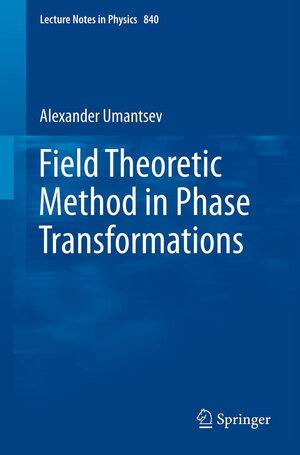
From the reviews:
“This book is a thorough presentation of the field theoretic method of study of phase transformations in material systems. … The book is well written and quite appropriate as a reference on the subject, but can also be used as a textbook for an audience interested in the physical aspects of the theory. It should also be useful to mathematicians interested in the analysis and numerics of phase transitions who want to deepen their knowledge on the physical origins of the problems they work on.” (Apostolos Damialis, Mathematical Reviews, July, 2013)
“The author discusses the field theoretic method in phase transitions. Phase transitions are significant changes in a system’s properties and symmetry, which happen as a result of changes of external conditions … . This book is aimed at researches who are interested in all aspects of phase transformations, especially for practitioners who are involved in theoretical studies or computer simulations of the phenomena. This book can be used as a textbook for a graduate or upper-level undergraduate course in the physics of phase transitions.” (Nasir N. Ganikhodjaev, Zentralblatt MATH, Vol. 1252, 2012)
Field Theoretic Method in Phase Transformations
von Alexander UmantsevThe main subject of the book is the continuum, field theoretic method of study of phase transformations in material systems. The method, also known as „phase field“, allows one to analyze different stages of transformations on the unified platform. It has received significant attention in the materials science community recently due to many successes in solving or illuminating important problems. The book will address fundamentals of the method starting from the classical theories of phase transitions, the most important theoretical and computational results, and some of the most advanced recent applications.



